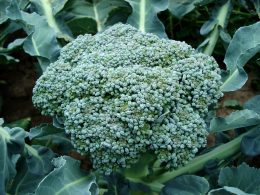Food prices in India have been a hot topic for discussion lately, and for good reason. As one of the largest food producers and consumers in the world, any shifts in Indian food prices can have far-reaching implications for the global economy. In fact, many experts consider India’s food prices to be a key indicator of global inflation levels. So what exactly is driving these changes, and what do they mean for us all? Let’s take a closer look at why India’s food prices are such an important factor to keep our eyes on.
What are food prices in India?
Food prices in India refer to the cost of basic food items, such as grains, vegetables, fruits, dairy products, and meat. These prices are determined by various factors such as supply and demand dynamics within the country and global market trends.
India is a primarily agrarian country with a large population that relies heavily on farming for their livelihoods. As such, fluctuations in crop yields due to weather patterns or other external factors can have a significant impact on food prices.
Additionally, transportation costs play an important role in determining food prices. The vast geographical size of India means that transporting goods from one region to another can be expensive.
The government also plays a vital role in regulating food prices through subsidies and price controls. For instance, the government sets minimum support prices (MSP) for crops like wheat and rice to ensure farmers receive fair compensation for their produce.
Food prices reflect not just local but also global conditions. Because many staple foods are traded internationally, events like droughts or floods in exporting countries may affect Indian consumers’ access to affordable food options.
Why are food prices in India a key indicator for global inflation?
India is known for its diverse cuisine that features a wide range of spices, herbs, and ingredients. However, the prices of these food items have been on the rise in recent years. This trend has significant implications not only for India but also for the global economy.
One reason why food prices in India are a key indicator for global inflation is that India is one of the largest producers and consumers of many commodities like grains, fruits, vegetables, and dairy products. Therefore any fluctuations in Indian food prices can have a ripple effect on global markets.
Another reason is that rising food prices often lead to higher inflation rates which affect not just the agriculture sector but also other industries such as manufacturing and services. As businesses struggle with increased costs due to inflationary pressures they may raise their product or service prices leading to further price hikes across sectors.
Moreover, because India’s population is so large (over 1 billion people) any changes in demand or supply can create market imbalances which drive up commodity prices worldwide. This makes it essential to keep an eye on Indian food price trends when examining global economic indicators.
Watching how much Indians pay for their groceries could be more than just another data point; it could be an early warning sign indicating potential shifts in worldwide economic conditions.
How have food prices in India changed in recent years?
In recent years, food prices in India have fluctuated significantly. In 2020, the COVID-19 pandemic caused disruptions to supply chains and led to a temporary decrease in food prices. However, prior to this, there was an upward trend as seen from data collected by the government.
Various factors contribute to these fluctuations including weather conditions affecting crop yields and international trade policies that affect imports and exports of agricultural goods. Additionally, inflation rates impact food prices as well.
The Indian government has implemented measures such as minimum support prices for farmers’ produce and subsidies for consumers on certain commodities like rice and wheat which aim to stabilize food prices. Despite these efforts, global market trends continue to influence local markets leading to fluctuations in pricing.
It is important for policymakers globally to monitor changes in food prices closely as they can potentially indicate future inflationary pressures or deflationary tendencies within respective economies.
What factors have contributed to rising food prices in India?
There are various factors that have contributed to the rising food prices in India. Firstly, the increase in global crude oil prices has led to higher transportation costs for agricultural products, resulting in higher food prices.
Secondly, climate change has had a significant impact on agriculture in India. Erratic weather patterns such as droughts and floods have caused crop failures, reducing supply and increasing demand for existing stocks of food commodities.
Thirdly, government policies such as minimum support price (MSP) for crops like wheat and rice have encouraged farmers to grow these crops at the expense of others. This has resulted in an imbalance between supply and demand of other essential commodities like vegetables and pulses.
Additionally, the lack of adequate storage facilities has also been a contributing factor to rising food prices. Poor storage infrastructure leads to wastage of perishable goods during transit or storage which results in reduced supply further driving up their cost.
Population growth is another factor responsible for increased demand leading to inflationary pressures on agricultural produce.
Multiple factors including global market forces along with domestic issues contribute towards fluctuating food prices creating challenges both nationally & internationally while it’s important that governments take action towards mitigating this issue.
What are the implications of rising food prices in India for the global economy?
The implications of rising food prices in India extend beyond its borders and can have a significant impact on the global economy. One major implication is that it affects inflation rates globally, as India is one of the largest food producers in the world. When food prices rise in India, it leads to an increase in demand for products from other countries, which can lead to higher prices worldwide.
Additionally, rising food prices can also impact poverty levels both within and outside of India. As basic necessities become more expensive, those who are already struggling financially may find themselves unable to afford essential goods like food and water. This could lead to increased social unrest and political tensions.
Moreover, high food prices in India could also affect international trade relationships with other countries that rely on Indian imports or exports. If Indian farmers struggle due to high input costs or low yields caused by climate change or natural disasters, then there may be less supply available for export markets.
Rising food prices in India should not be overlooked as they hold significant implications for the global economy at large.
Conclusion
India’s food prices are a crucial indicator for global inflation due to its massive population and the country’s position as one of the largest producers and consumers of food in the world. The rising costs have had significant economic implications not only for Indians but also for people worldwide. As we’ve seen, various factors contribute to this trend, such as climate change, supply chain disruptions, changing dietary preferences, and government policies.
Therefore it is essential that policymakers monitor these changes closely and take appropriate measures to mitigate their effects on people’s lives. This can be done by promoting sustainable agricultural practices, investing in infrastructure development such as better transportation networks and storage facilities to reduce wastage during transit times while ensuring that government policies support both farmers’ livelihoods and consumers’ access to affordable food.
By taking these steps together with international cooperation among governments worldwide –we may be able to avert any potential crisis caused by escalating food prices while supporting more resilient agri-food systems globally.












